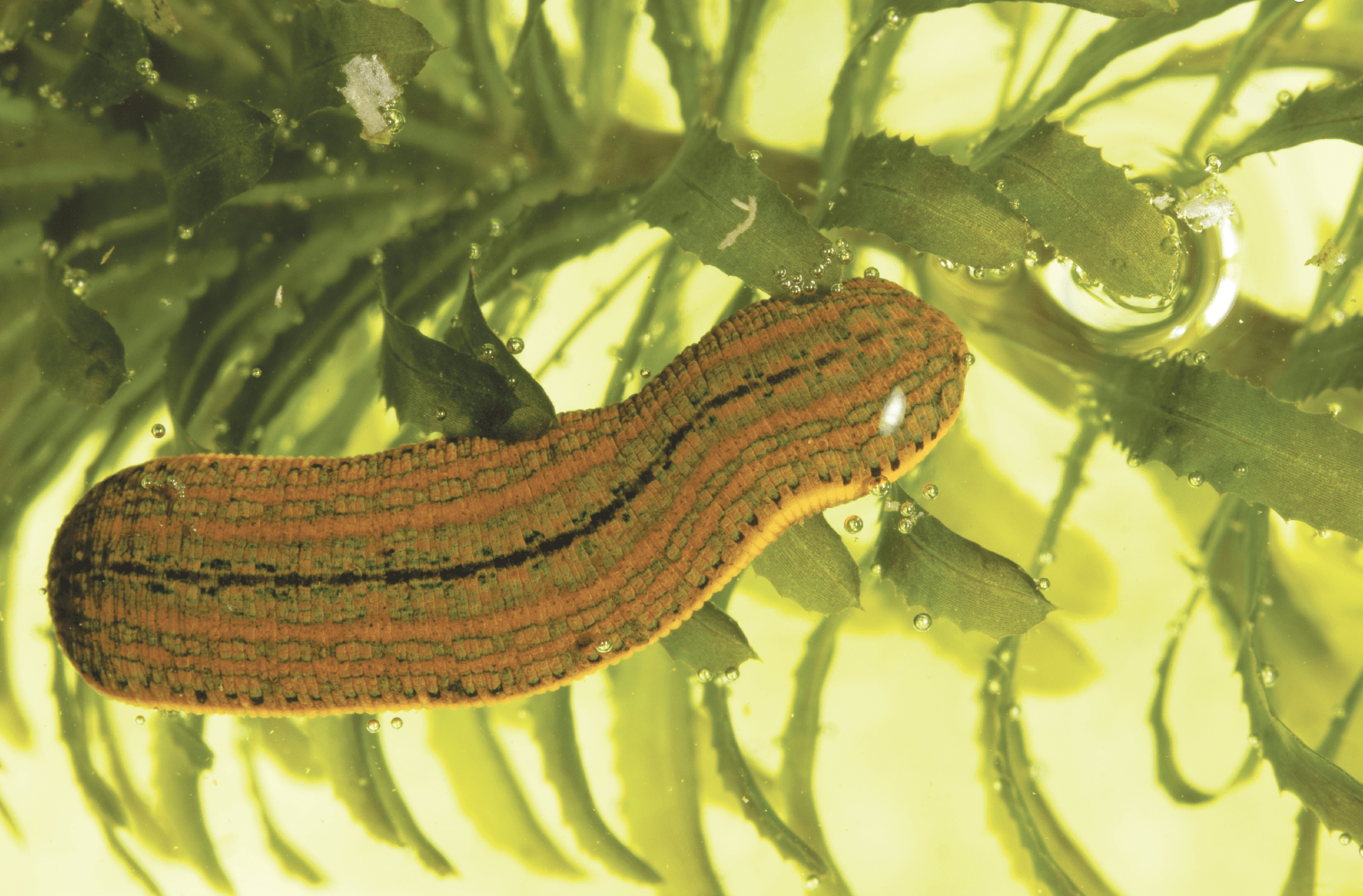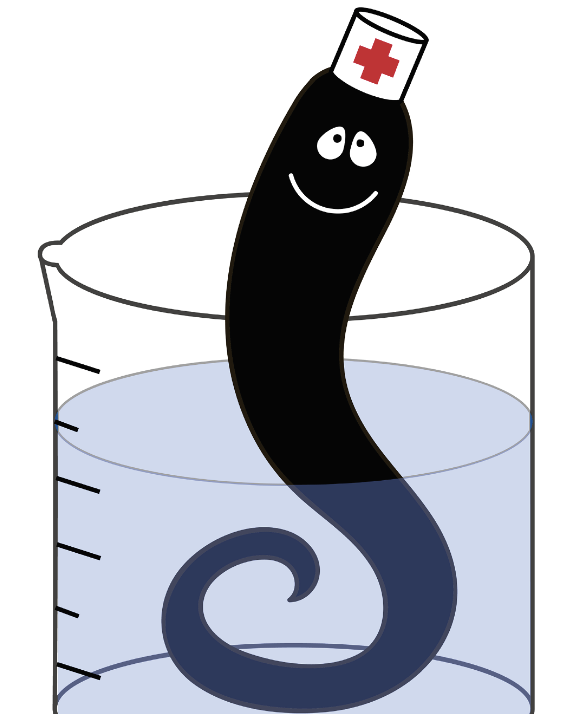
By Jim Knox
Imagine a creature with ten eyes, six stomachs, three sets of tooth-studded jaws boasting 100 body-cutting edges, and suckers to latch onto prey—and you’ve conjured up the perfect villain for the next sci-fi franchise. Since we’re exploring the bounds of imagination, imagine this creature feasts on human blood and can gain 10 times its weight while it drains you of the precious life-sustaining red stuff. Hard to believe? What’s more, this beast possesses an anesthetic in its saliva, enabling it to bite its unsuspecting prey without alerting it to the attack, and an anticoagulant to increase blood flow and expedite its life-siphoning meal. If the idea of such a beast is not appealing to you, you’re not alone. This creature is not only real, it has been simultaneously reviled and prized for millennia.
Topping out at eight inches in length, Hirudo medicinalis, properly known as the European Medicinal Leech, is a small beast with a big impact. Known, and utilized, by medical practitioners since the time of the Greek physician, Nicander, in 200 BC, these spineless wonders have been improving the lives of humans down through the ages. Sometimes the most miraculous of nature’s life forms come in the most unappealing packages. With a flattened body with no discernible head, a front and rear sucker, and 34 body segments, the green and brown leech may not win many beauty contests. It will however vie for the title the world’s most beneficial parasite.
How could this be? If you thought parasites have no redeeming qualities, you’d be in good company. Nearly everyone feels the same way. Like most Fairfield County residents who have had their share of mosquito bites at a barbeque, or worse yet, suffered through a bout of Lyme Disease, we’re fed up with creatures who feed on us. Yet, parasites come in myriad varieties and the most successful parasites are the ones who feed off their hosts with little ill effect. Enter the Medicinal Leech. Feeding a small amount from their mammalian hosts (they don’t specifically target humans), these creatures parlay a single meal into months of sustenance and reproduction of their young.
Of the 300 or so known species, the Medicinal Leech, and its close cousin, Hirudo verbana, are among the only species used in medical therapies. The history of service of these creatures is quite lengthy. Hirudotherapy or leechcraft was practiced in ancient China, India, and Egypt at least 3,500 years ago. By the medieval era, early European medicine employed leeching so often, the modern term “leech” derived from the Anglo-Saxon word, “laece,” for doctor. In fact, the European Medicinal Leech was so effective and prized in early medicine, it was overharvested to near extinction in its native Western Europe. Thankfully, the species hung on in Czarist Russia, where it became the source of a lucrative trade, ensuring its survival.
Seemingly simple at a casual glance, this is no common bloodsucker. Dubbed “Nature’s Pharmacopeia,” the Medicinal Leech’s signature bite confers a host of benefits for what ails our species. Its enzyme and protein cocktail aid in the generation of blood cells, the boosting of metabolism and the stimulation of the circulatory system. The leech’s benefits extend over the spectrum of medicine from cosmetic surgical patients to stroke victims. Additionally, it offers clinical benefit to patients suffering from infertility, diabetes, heart disease and glaucoma. It even helps us to measurably lower the bane of the western diet—high cholesterol.
While discounted and synonymous with “barbarism” or “quackery” throughout most of the history of modern medicine, leeches have gotten us forgetful humans to come around to their timeless—and very real curative abilities. From providing essential anti-coagulating therapy for transplant patients, to clot-busting drugs for patients with bleeding disorders, the leech has proven its worth to countless patients—medical professionals worldwide since the 1950s. Perhaps no finer validation for these medical wonders came in the form of official approval of the Medicinal Leech as a “Medical Device” by The U.S. Food and Drug Administration in 2004!
In lifetimes beyond count, wild creatures have adapted to forbidding habitats amid intense competition, devising ingenious strategies for survival. Every living creature offers us discovery, innovation, and insight. In the Medicinal Leech the uninformed sees a spineless blood sucker, a creature of revulsion. For how many creatures can we say that for every bit it takes, it gives back tenfold? The recipient of an organ transplant, the grandchildren of a recovering stroke victim need no convincing. For them, the leech could receive no higher regard and no greater thanks.
Jim Knox serves as the Curator of Education for Connecticut’s Beardsley Zoo and as a Science Adviser for The Bruce Museum. His passions include studying our planet’s rarest creatures and sharing his work with others who love the natural world.


